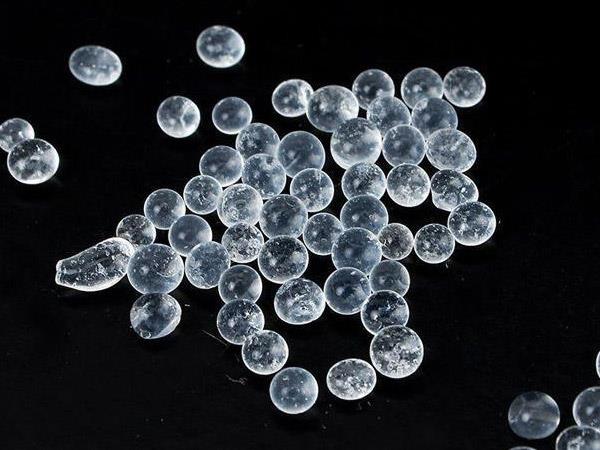Silica gel desiccant is a highly active adsorbent and is the most commonly used desiccant. It belongs to amorphous material and its chemical formula is mSiO2.nH2O. It conforms to Chinese chemical standard HG/T2765-2005. It is an FDA-approved desiccant that can be directly in contact with food and medicine. The silica gel desiccant has strong moisture absorption capacity and strong adsorption performance, and it does not soften or liquefy even if the silica gel desiccant is completely immersed in water. It is non-toxic, odorless, non-corrosive and non-polluting, so it can be in direct contact with any item.
What are the production processes of silica gel desiccant, the raw materials to be prepared are: sodium silicate (sodium silicate, water glass), sulfuric acid.

1. The alkali and acid are prepared in advance, and the solid sodium silicate is melted at a high temperature and filtered to prepare a liquid of a certain concentration, and then the sulfuric acid is prepared to a certain concentration of liquid, and the sulfuric acid concentration is 20%.
2. The second step is to make glue (gel granulation). This step is the most critical. The previously prepared saponin and sulfuric acid solution are reacted under specific conditions to form a sol gel solution. After the concentration will become gel particles. The shape and size of the particles can be determined according to the needs and production capacity of the user. The current gel granulation method is commonly used for Wei air granulation. The acid-base ratio, concentration, temperature and gel granulation time of the gel are specific process parameters of the gel granulation process.
3. The aging gel needs to pass a certain time and temperature, and the PH value can be aged to make the gel skeleton strong. During the aging process, the glue between the particles condenses to form Si-O-Si bond, which enhances the strength of the skeleton, and the particles are close to each other and shrink. The space in the truss structure and the part of the water contained therein is extruded.
4. Pickling, washing and washing
Pickling, washing, and washing are also important steps in the process because the Na2SO4 formed by the granular gel is washed away. Each anion and cation is controlled to within the process requirements.
It can be said that the pore characteristics of the finished silica gel are determined by the aging of the washing process, and the degree of aging of the process depends on the operation in the pickling, washing and washing processes.
5. The desiccant, the prepared hydrogel (after washing) is placed in the drying room, and the water content of the gel itself is dried to the required range under specific conditions. The higher the drying temperature, the greater the rate at which the primary particles aggregate and the larger the pore size.
6. Screening, using the ball selection machine to filter the silica gel obtained after drying through a sieve of different pore sizes according to a certain particle size, and simultaneously screening the broken silica gel.
7. Picking glue: Pick out the colored balls and impurities in the silica gel, then use the composite paper to pack as required, and then seal.
After the above steps, the finished silica gel desiccant is produced.





